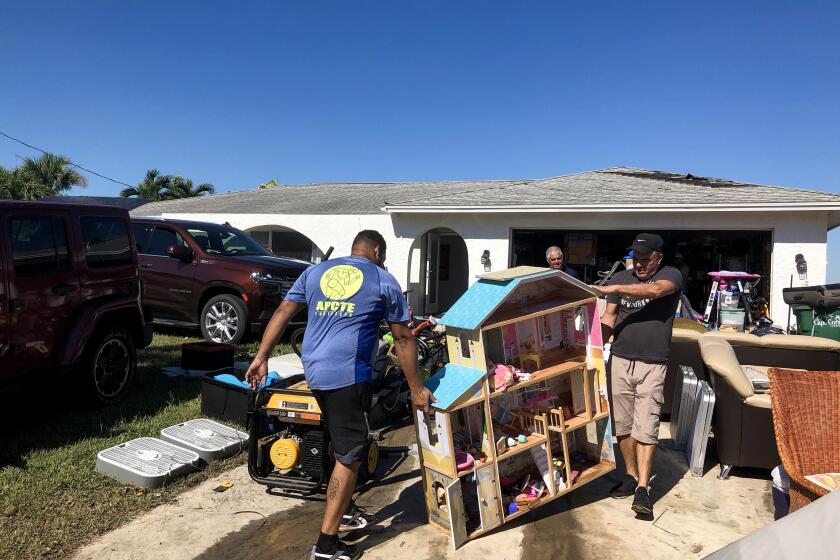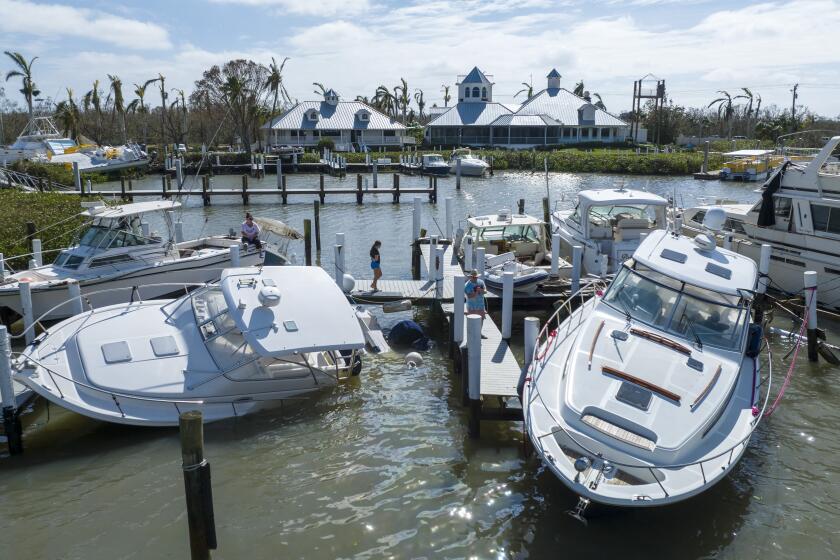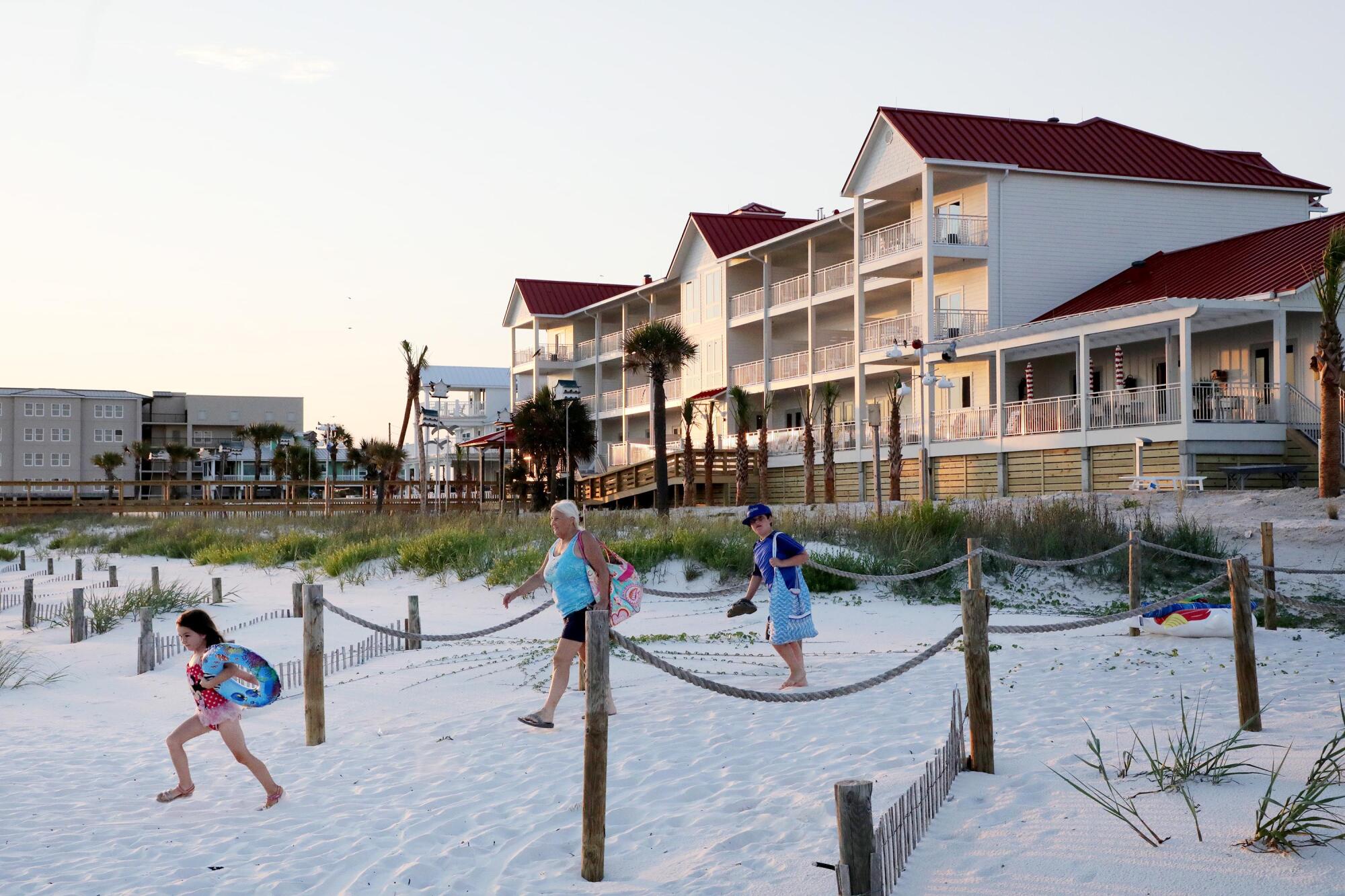
- Share via
MEXICO BEACH, Fla. — The new homes, painted in tropical shades of turquoise, turmeric and papaya, loom above the sugar white sand, perched on concrete and rebar columns that are at least 8 feet tall.
As the sun rises, families emerge, lugging beach chairs, buckets and fishing nets toward the sparkling waters of the Gulf of Mexico. They trudge past workers hammering nails into new homes, past concrete slabs, peeling linoleum kitchen floors and empty lots choked with weeds.
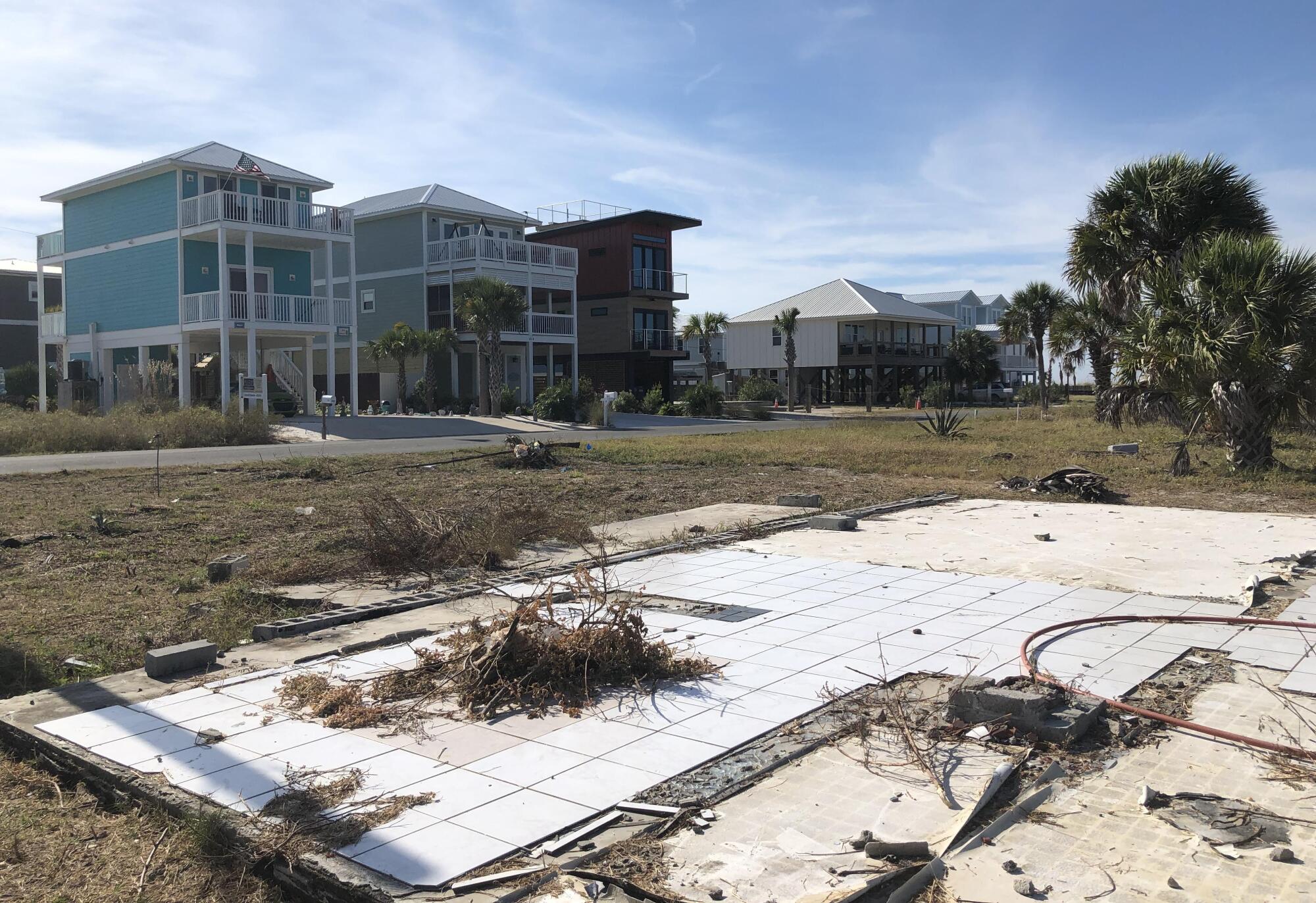
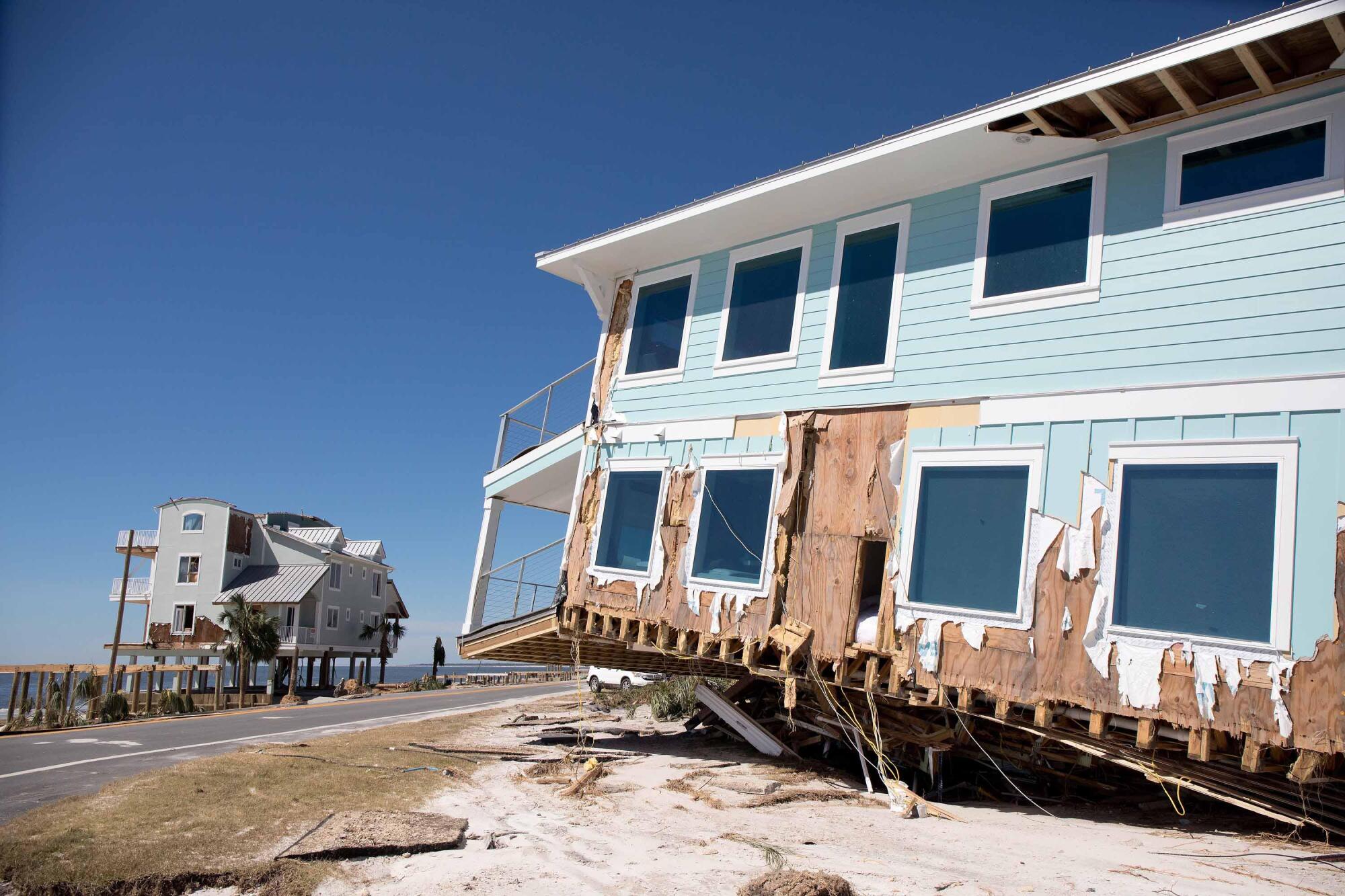
Four years after Hurricane Michael obliterated this blue-collar beach town — tossing tricycles, bathtubs and even entire homes — across the two-lane highway, recovery appears to be at the halfway point.
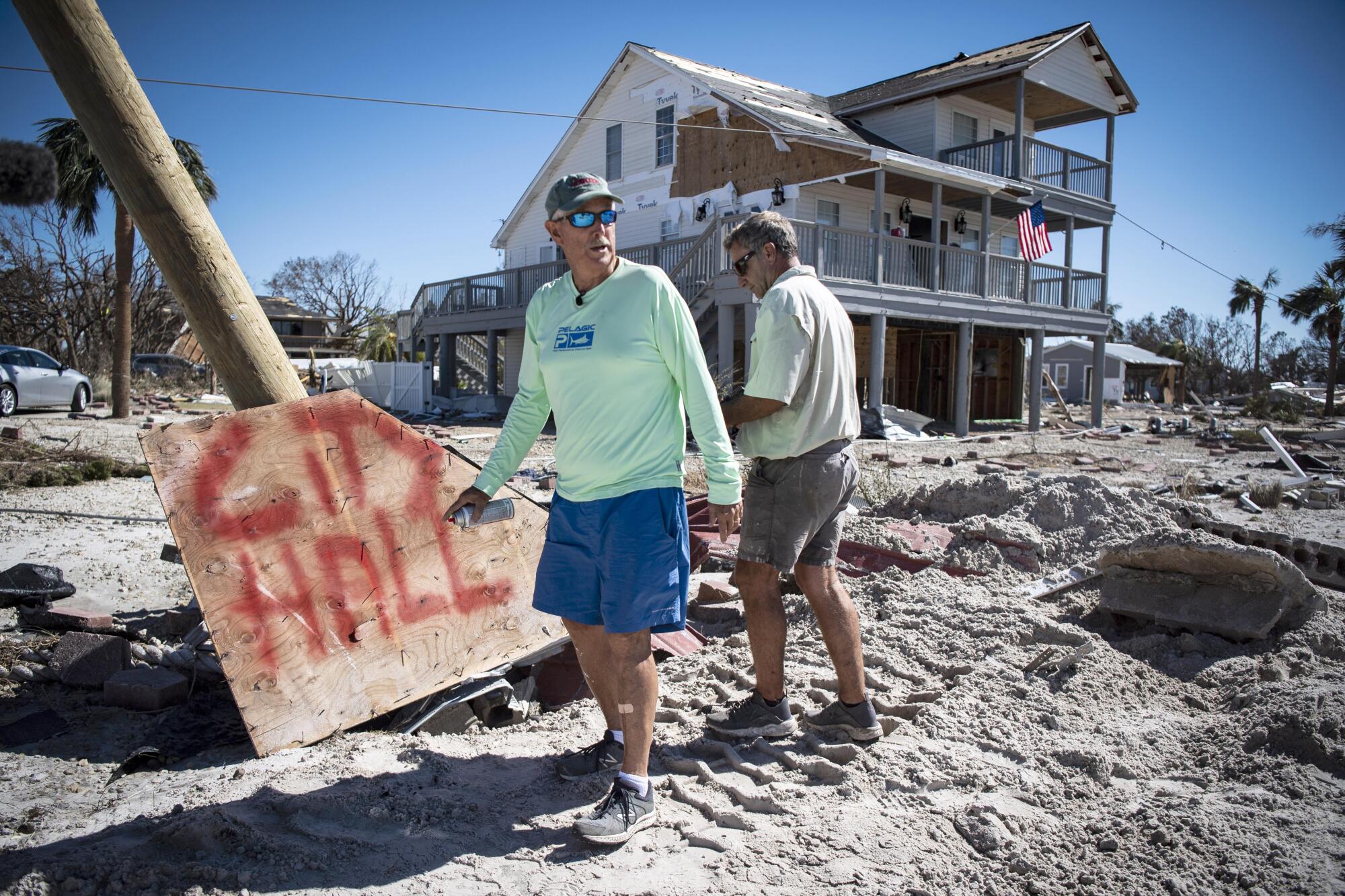
Old-style Florida cinder-block and stucco cottages are being replaced with sturdier, more elevated homes that conform to Florida’s latest coastal building codes, positioning them to better withstand powerful winds and storm surges.
The new homes are testaments to the lure of the coast and the resilience of some of the locals. But they are also bigger and more expensive — so much so that many workers and retirees who settled here have found themselves priced out.
“We always wanted to stay, but wealthier people are moving in,” said Codey McCarthy, a 27-year-old line cook.
Should Cape Coral and other low-lying cities in Florida rebuild in an era of more intense hurricanes, higher rainfall and rising seas?
He and his wife once lived near the beach in an apartment attached to her parents’ house. But after the hurricane, her parents sold the wrecked property and relocated to Georgia.
McCarthy and his wife moved inland into a trailer with hopes of eventually returning to Mexico Beach. But after rents tripled, they left for Georgia as well.
“Mexico Beach is not the way it was when we fell in love with it,” McCarthy said.
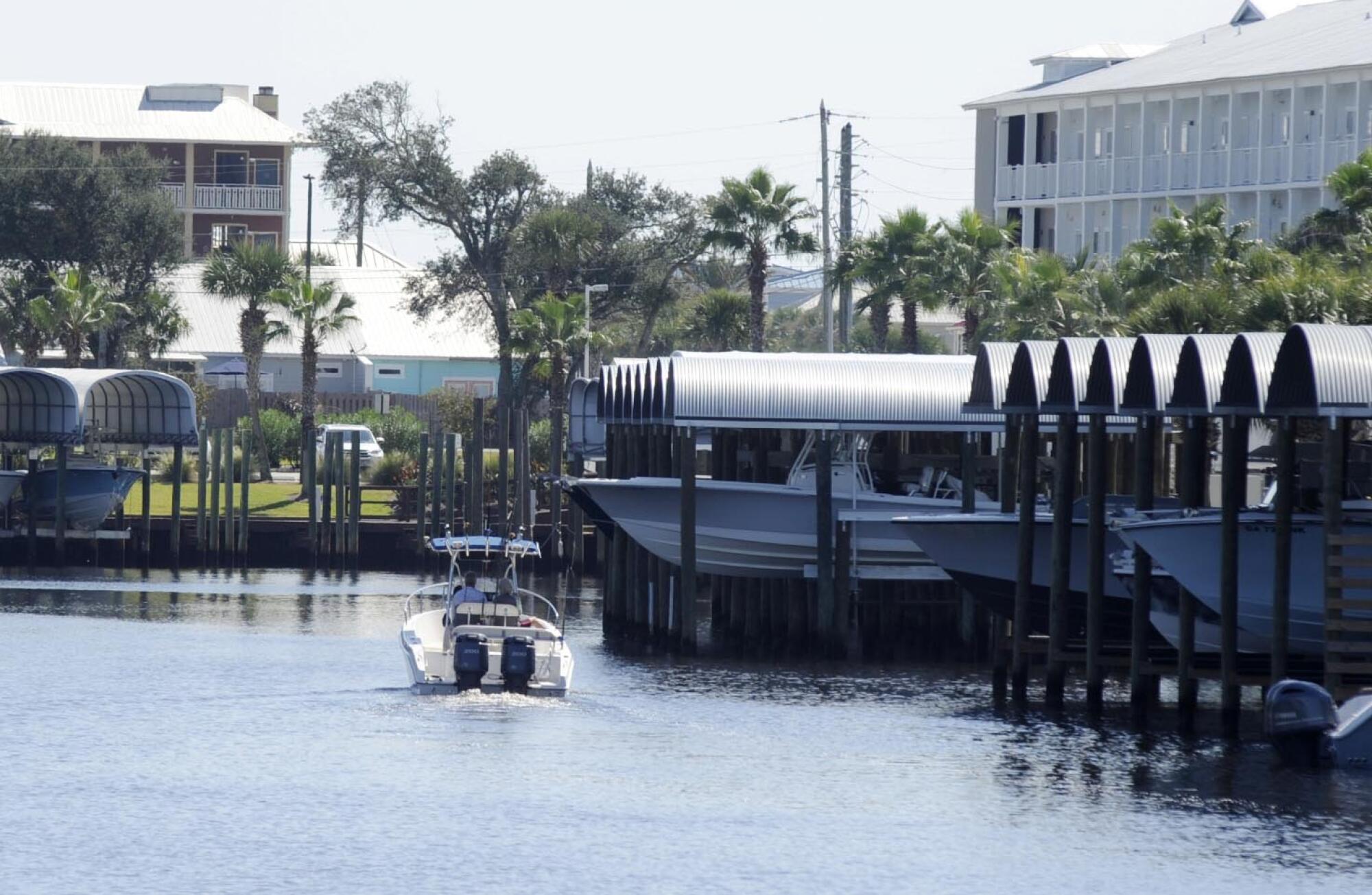
Mexico Beach is not the only coastal town in the U.S. struggling with affordable housing. Prices have skyrocketed in seaside communities from California to North Carolina as big corporations gobble up properties and more Americans work from home and buy second homes.
But this town on Florida’s northern Gulf Coast offers an intimate glimpse into the challenge of fortifying a coastal community against climate change without turning it into a preserve of the wealthy. It also shows what might be ahead for the swath of southwest Florida that was recently devastated by Hurricane Ian.
Many residents have left for good. Almost everyone who has tried to stay has battled insurance companies, government bureaucracy and rising prices, construction costs, supply chain problems and labor shortages exacerbated by the pandemic.
Still, Craig Fugate, a former administrator of the Federal Emergency Management Agency who lives in Gainesville, Fla., hardly recognized Mexico Beach when he drove through it this summer. “It looked not so much like a hurricane hit, but a major renovation was taking place,” he said. “They’re back, and there are winners and losers.”
After Hurricane Ian, readers rightly asked: Why is rebuilding in coastal Florida any different than rebuilding for poor Californians after wildfires?
In his experience, building to more stringent construction codes often means new investors and new residents.
“The question is: How do you ensure that the workforce and the people [who had been] living there are still going to have housing options within their community?” Fugate said. “Where are the working-class permanent residents that provide the workforce for the tourist economy?”
On the morning of Oct. 10, 2018, Mexico Beach was a quaint and sleepy beach town, a relic of old-style Florida with rows of modest houses and townhomes lining small roads that led to the shore.
Far from the hustle and bustle of Panama City Beach 30 miles west, there was no downtown to speak of: The central public gathering spot was a long rickety 1960s-era wooden pier. The town eschewed big high-rise condos and chains in favor of a handful of kitschy motels and one-of-a-kind mom-and-pop stores.
Throughout the summer, when the town’s population swelled to about 10,000 with vacationers and second-home owners, kids flocked to Tommy T’s ice cream store to play retro Pac-Man and Galaga video arcade games, and families feasted on fried shrimp on Toucan’s rustic wooden deck overlooking the water.
“Visiting Mexico Beach gives you that pleasant feeling that you’ve just stepped back in time,” the city’s website boasted in 2016, noting that Mexico Beach did not even have a set of traffic lights.
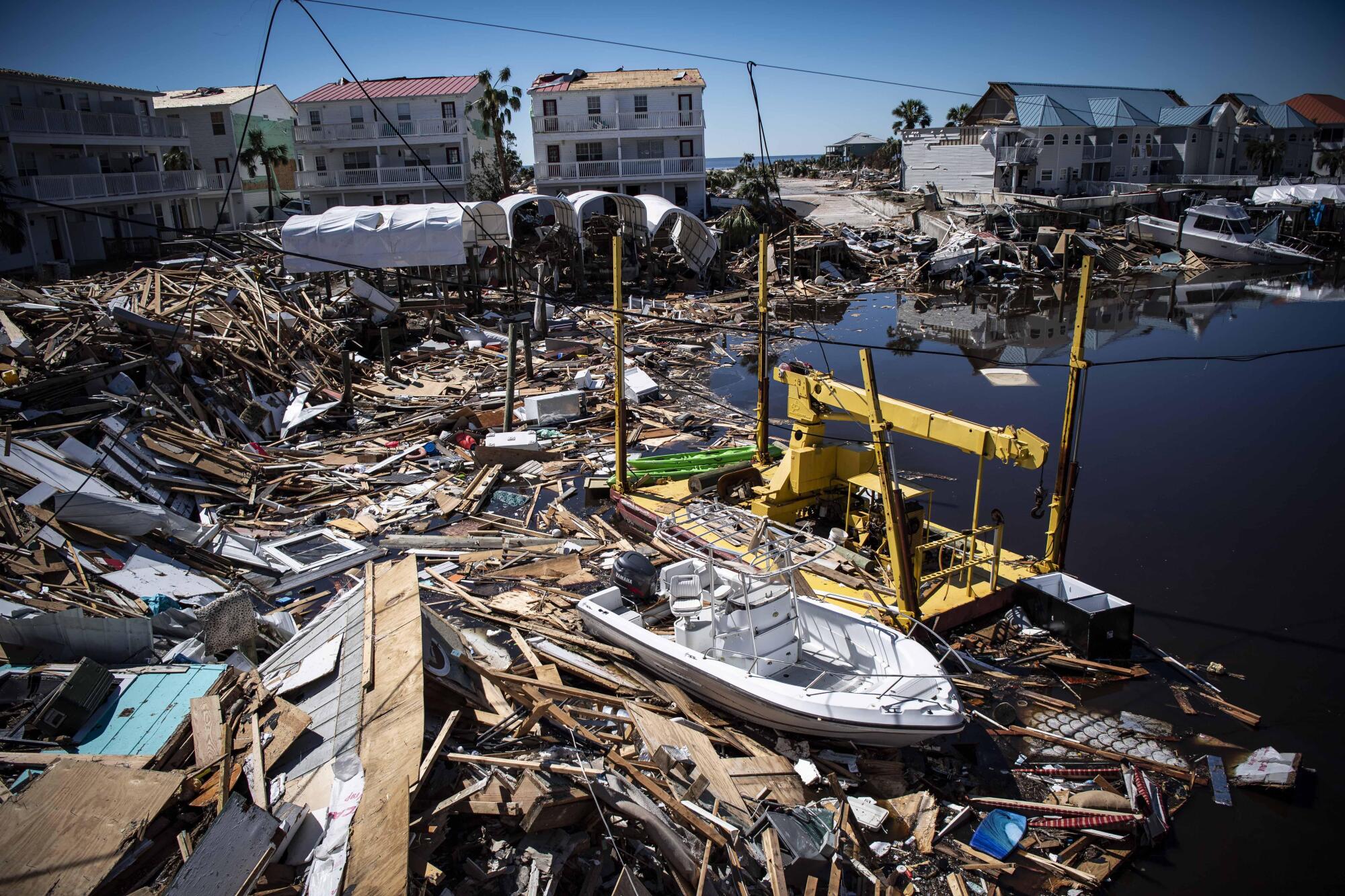
Hurricane Michael, a Category 5 storm with 160-mph winds and a 14-foot storm surge, pounded the city’s pier into matchsticks. It razed Toucan’s and Tommy T’s, toppled the water tower and demolished the police station, grocery store and hardware store.
In all, 1,584 of the city’s 1,692 structures were damaged or destroyed. The population of 1,200 full-time residents quickly dwindled to about 400.
“I had nothing to draw on to tell me, ‘OK, when this happened last time, we did this,’” said Mayor Al Cathey, 74, whose family moved here in the 1950s and has owned the hardware store since 1974. “We’d never done this.”
Mexico Beach had a reserve of $1.3 million and removing the rubble cost more than $60 million. After clearing the debris and restoring water and power, the town had to get the state of Florida to front money before applying for FEMA reimbursement.
“It has been a dogfight,” Cathey said. “You had to supply an endless amount of documentation. Boxes and boxes and boxes.”
A key challenge in the first few years was setting guidelines for residents and business owners who wanted to rebuild. Some homeowners were seniors on fixed incomes. Many were second-home owners who had inherited houses and didn’t have flood or wind insurance.
After deciding that the existing FEMA flood maps did not accurately recognize the risk of flooding from storm surges, city officials went beyond federal standards in 2019 and required homes in most of the city to be significantly higher: at least a foot and a half higher than FEMA’s 500-year flood elevation.
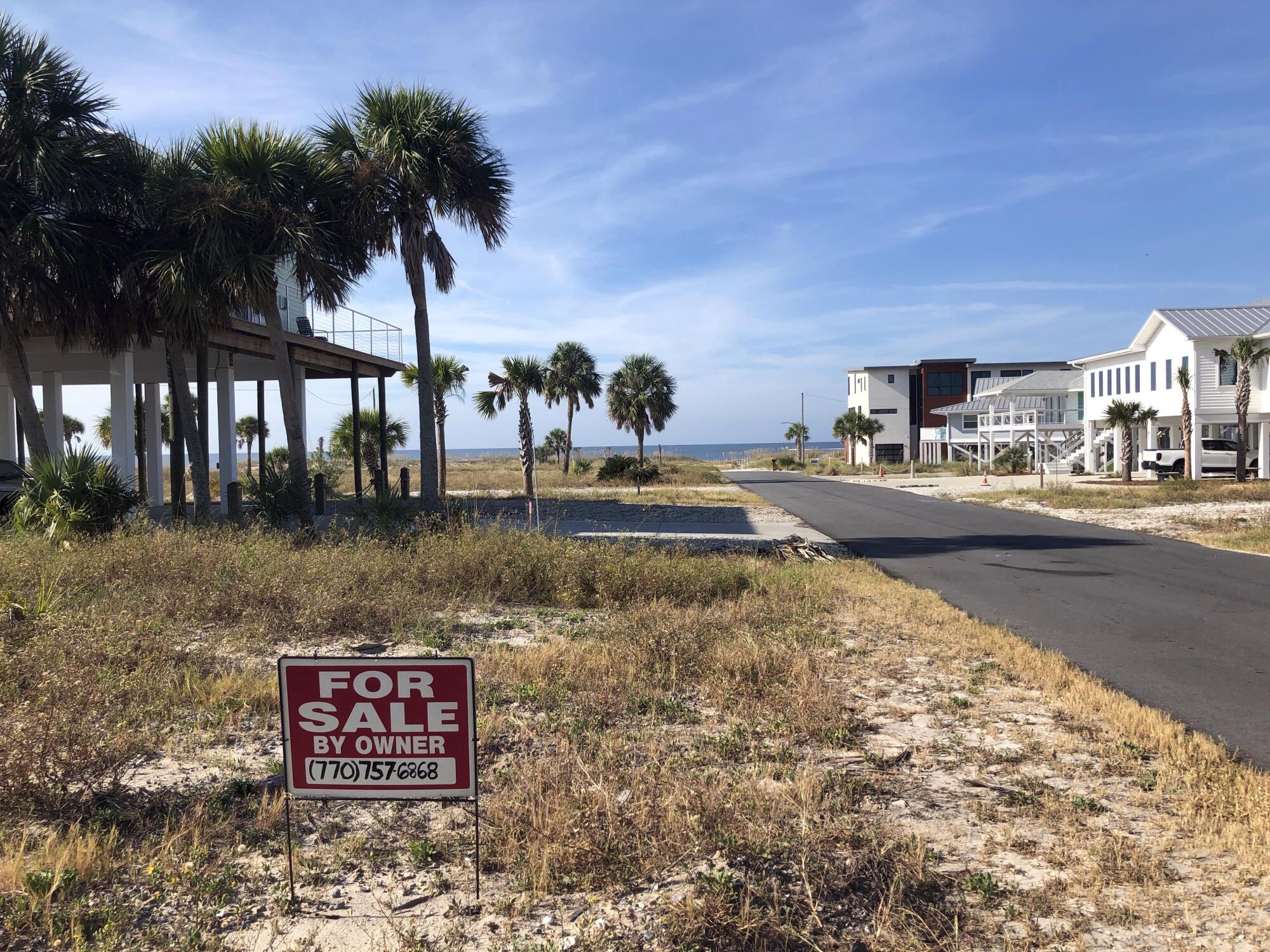
But many homeowners complained that the new rules raised costs so much that they were prevented from rebuilding.
In December 2020, the city adjusted the elevation requirements in an effort to make the cost of building less exorbitant. Homeowners in many parts of the city can now rebuild on fill instead of elevated pilings. “Basically, we went very strict and found that we could walk it back a little to make it more obtainable for all and still be extremely effective,” said Douglas Baber, city administrator.
Mexico Beach now has a bank, a gas station, a restaurant, a hotel and about 900 residents.
It has received $110 million in federal funding to restore water and sewer mains, dredge debris from its canals, restore its beaches and build public parks. But the town is still waiting on FEMA money to rebuild its police station and erect a new concrete pier.
It does not have a grocery store. Most restaurants are working out of cramped food trucks and trailers.
Charles “Chuck” Smith, owner of the Gulf View Motel, is building a new structure after Michael destroyed his modest 1940s-era cinder-block building. His new 13-room motel, filled with metal rebar and concrete and elevated on a 32-inch-high block foundation, has cost Smith a little more than $2 million, far more than he got from insurance. He has had to take out $1 million in loans.
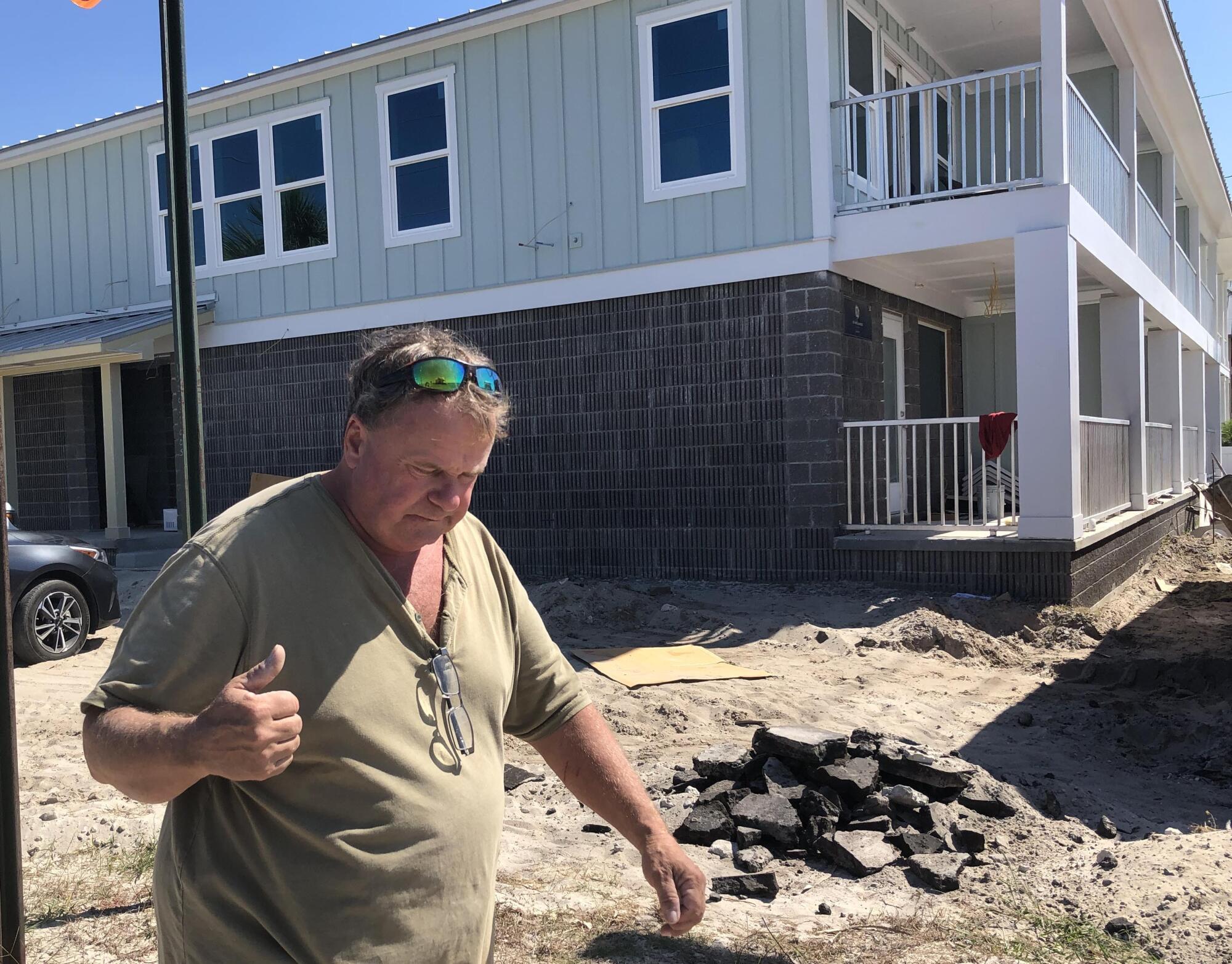
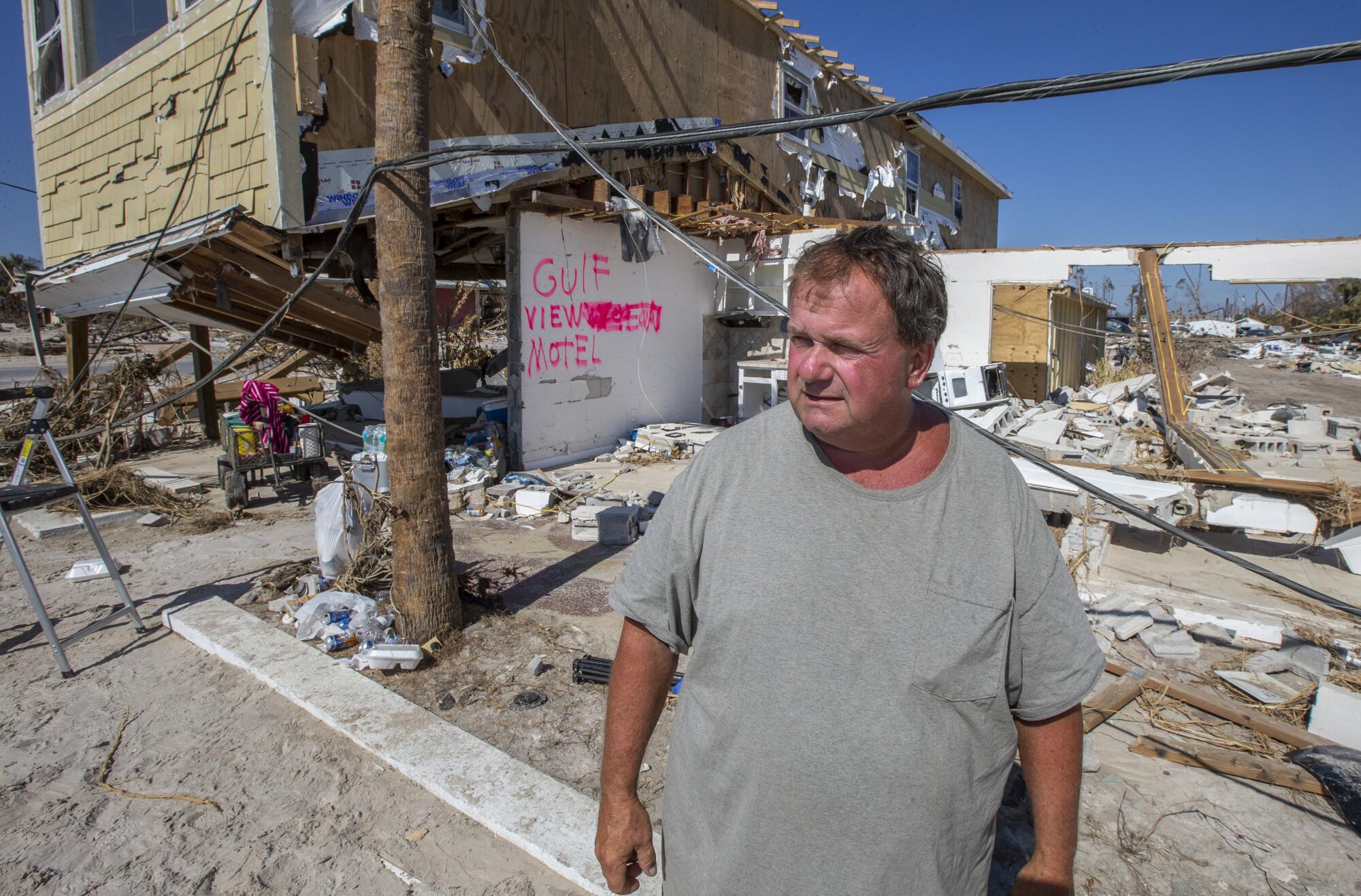
“It should last,” he said as he stood in the concrete breezeway, not far from the stairway nook where he sheltered during the hurricane. But, he added, “I wouldn’t do it again. It’s stressful.”
On the western edge of town, construction crews are working on a new complex of 216 apartments — the first phase of a mixed-use development that will eventually offer 944 housing units, but the city has not mandated that a portion of the housing be affordable.
Some residents complain that the development will disrupt Mexico Beach’s quiet, laid-back coastal vibe and bring unwanted traffic and crime. To Smith, who has lived here more than 40 years, the new apartment complex looks like “low-rent housing.”
“With all the people out there, I’m afraid Mexico Beach is going to end up with its very first red light,” Smith said. “I know that you can’t stop progress or anything, but is that progress?”
The mayor insists that Mexico Beach cannot stay the same.
“There are some that think we should return to what we had,” he said. “That’s not reality. The growth that is coming is needed. We had no apartments for schoolteachers or firemen or what they call mid-range professional people.”
As for how much the new apartments will cost, the market will decide.
Across the city, 500 residential lots have water meters but no houses.
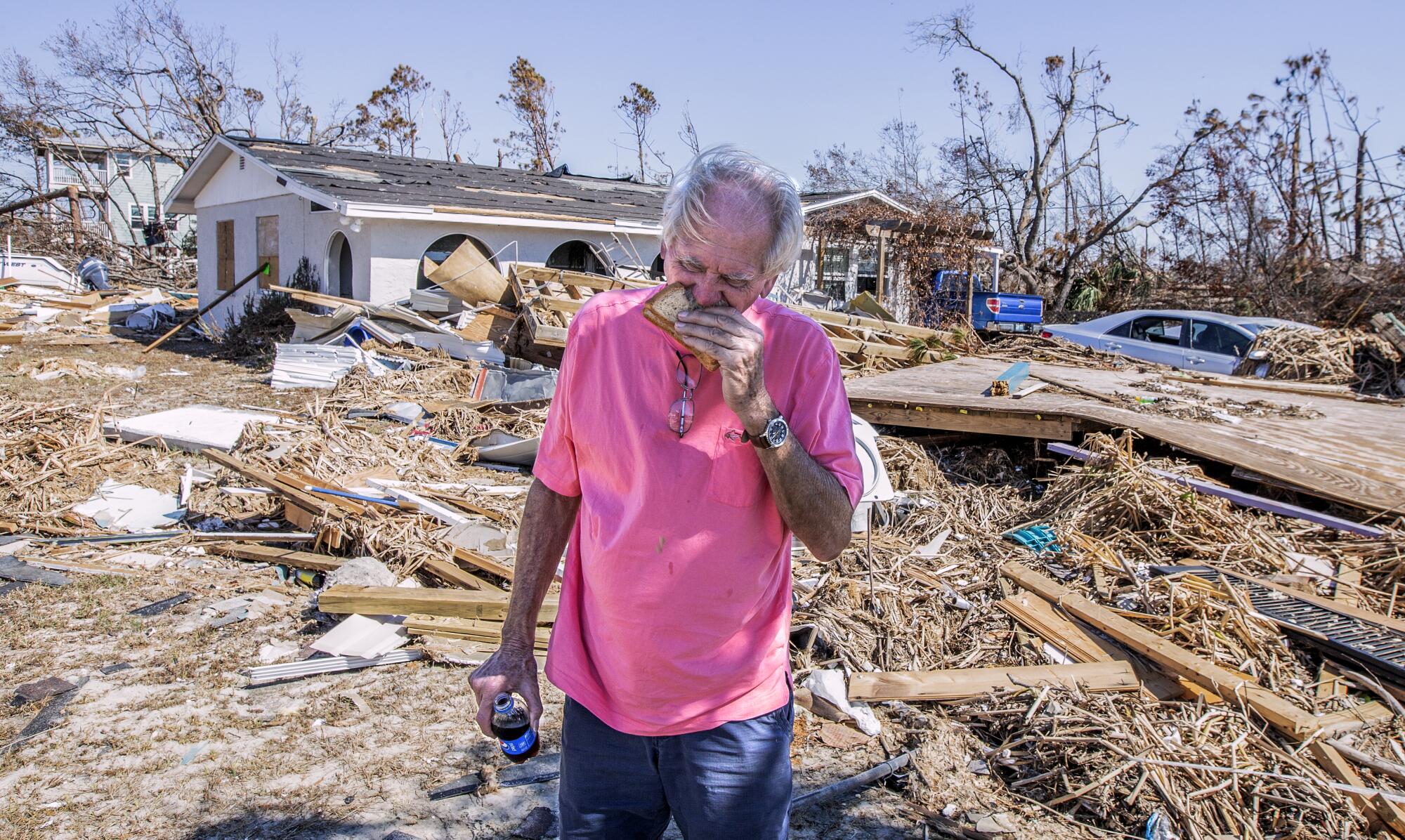
Mike Danner, 76, a retired mechanic who worked at the nearby Tyndall Air Force Base, sold his damaged 1950s stucco cottage two blocks from the beach even though it was salvageable. He didn’t want to leave, but his wife could not stand living amid the rubble after all her friends had gone.
His former home is now a vacation rental, painted mustard yellow with blue siding covering up the arches of his old stucco porch.
Some homeowners who are rebuilding worry that time is running out.
Darryl Wheeler, 65, a retired General Motors assembly plant worker who lives in Woodstock, Ga., said he recently received notice from Mexico Beach that he had until the end of the month to remove his trailer from
the lot where his second home had been as he tries to rebuild. His new home has walls, but he has been waiting six months for windows. He said he could not afford to rent a place while he finishes rebuilding.
“I think you ought to be able to put a camper on your property as long as you’re building,” he said. “Mexico Beach used to be a working man’s palace. It’s not no more. It’s turned into an uppity-uppity place.”
But the burden is hardest for renters.
Off the highway, nearly a mile from the beach where some vacant lots are on the market for above $1 million, some working-class residents and retirees are living in the Mexico Beach RV Resort, a flat, dusty park formerly known as Rustic Sands scattered with RVs and ramshackle trailers. Rents are rising.

Hector Morales, a 61-year-old cook who lost everything in the hurricane — his white and yellow mobile home, his job at Toucan’s, even his credit card — lived in a FEMA trailer at Rustic Sands for six months until he found a home about 10 minutes inland in the neighboring town of Overstreet. At the beginning of this year, he got a job at Killer Seafood, a restaurant operating out of a trailer in Mexico Beach. But he wonders how long his rent will continue to be $600, a bargain in the area.
“I am always worried because I am just renting,” Morales said. “Before I had a contract for a couple years. Now I’m living on a month-to-month basis.”
His former neighbor, Talia Butcher, a 43-year-old surgical technician, left Mexico Beach after Michael destroyed the double-wide trailer she and her husband, Robbie, rented on North 32nd Street. Butcher moved into a FEMA trailer in the Rustic Sands campground, but the resort upped the rental rate for lots from $600 to $900 a month. Robbie died of brain cancer in 2019, and she left the next year to become a travel nurse.
“The hurricane kind of just washed my life away,” Butcher said from her temporary home in Sarasota, Fla. “I don’t want to stay in Mexico Beach living penny by penny, day by day, just to survive.”
More to Read
Sign up for Essential California
The most important California stories and recommendations in your inbox every morning.
You may occasionally receive promotional content from the Los Angeles Times.
